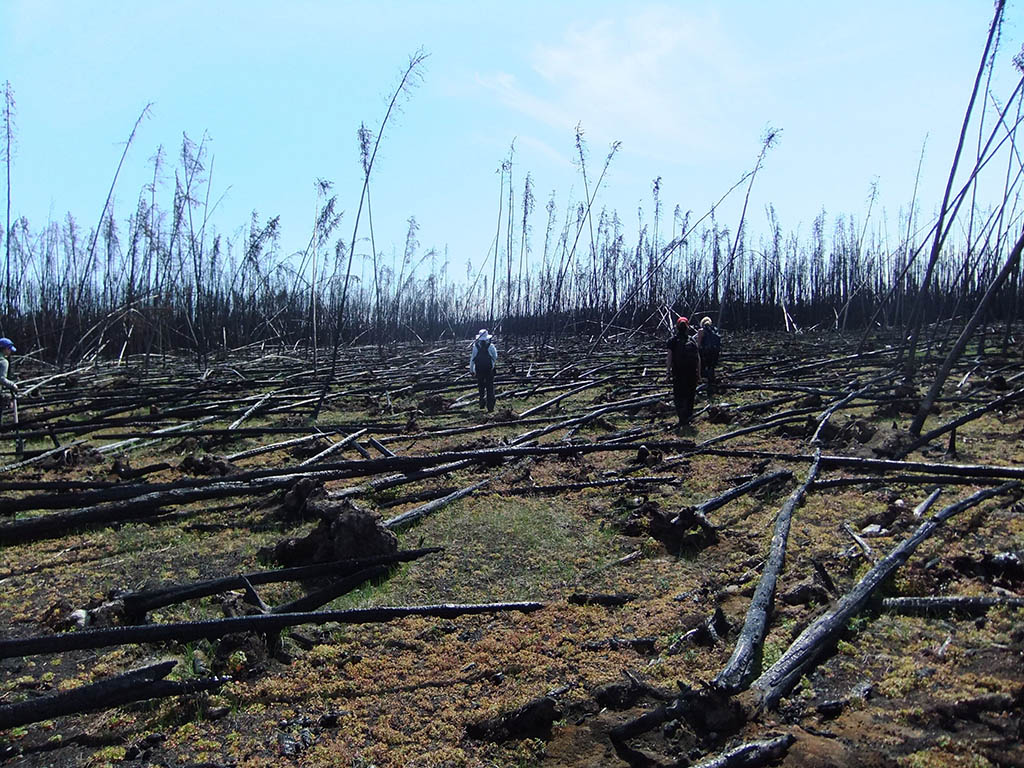The research team sampled more than 200 plots in the forests of Canada’s Northwest Territories to see whether “legacy” carbon left over from previous fire cycles was threatened by the intense 2014 fires. They found that forests less than 60 years old and located in drier climates had a higher risk of losing legacy carbon in the fires than older, wetter forests. (NASA / Xanthe Walker, Center for Ecosystem Science and Society at Northern Arizona University)
Home The research team sampled more than 200 plots in the forests of Canada’s Northwest Territories to see whether “legacy” carbon left over from previous fire cycles was threatened by the intense 2014 fires. They found that forests less than 60 years old and located in drier climates had a higher risk of losing legacy carbon in the fires than older, wetter forests. (NASA / Xanthe Walker, Center for Ecosystem Science and Society at Northern Arizona University) The research team sampled more than 200 plots in the forests of Canada’s Northwest Territories to see whether “legacy” carbon left over from previous fire cycles was threatened by the intense 2014 fires. They found that forests less than 60 years old and located in drier climates had a higher risk of losing legacy carbon in the fires than older, wetter forests. (NASA / Xanthe Walker, Center for Ecosystem Science and Society at Northern Arizona University)
The research team sampled more than 200 plots in the forests of Canada’s Northwest Territories to see whether “legacy” carbon left over from previous fire cycles was threatened by the intense 2014 fires. They found that forests less than 60 years old and located in drier climates had a higher risk of losing legacy carbon in the fires than older, wetter forests. (NASA / Xanthe Walker, Center for Ecosystem Science and Society at Northern Arizona University)



